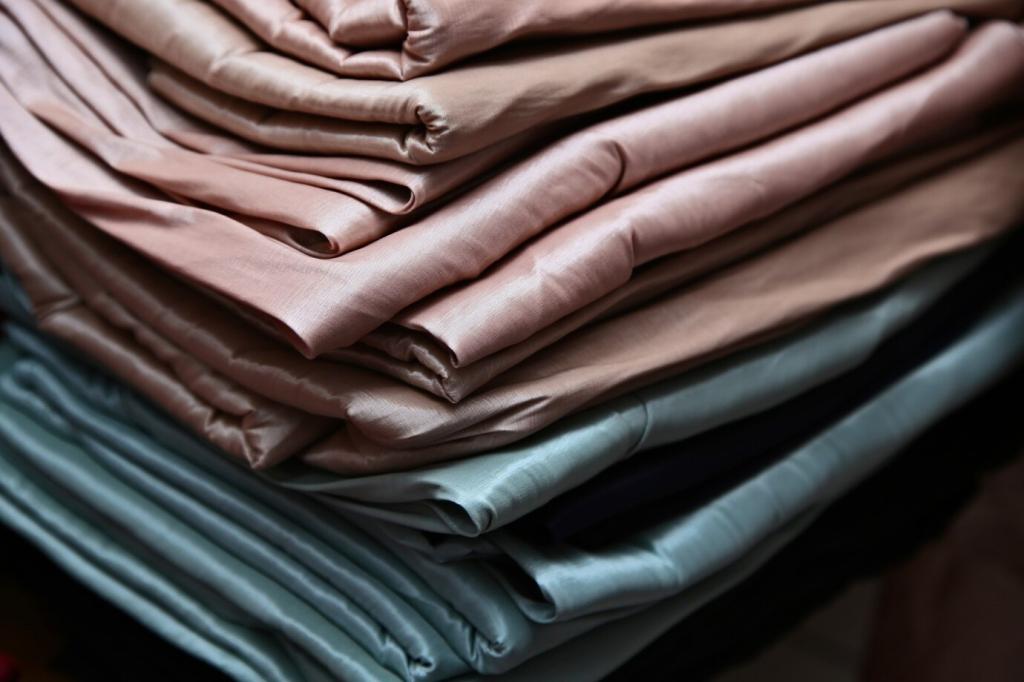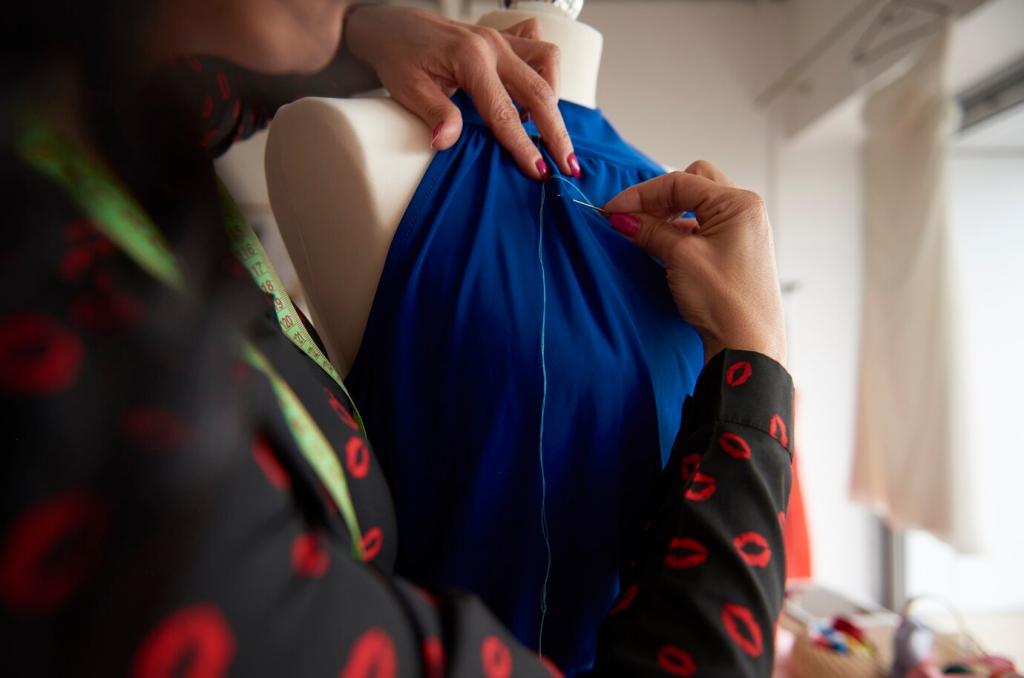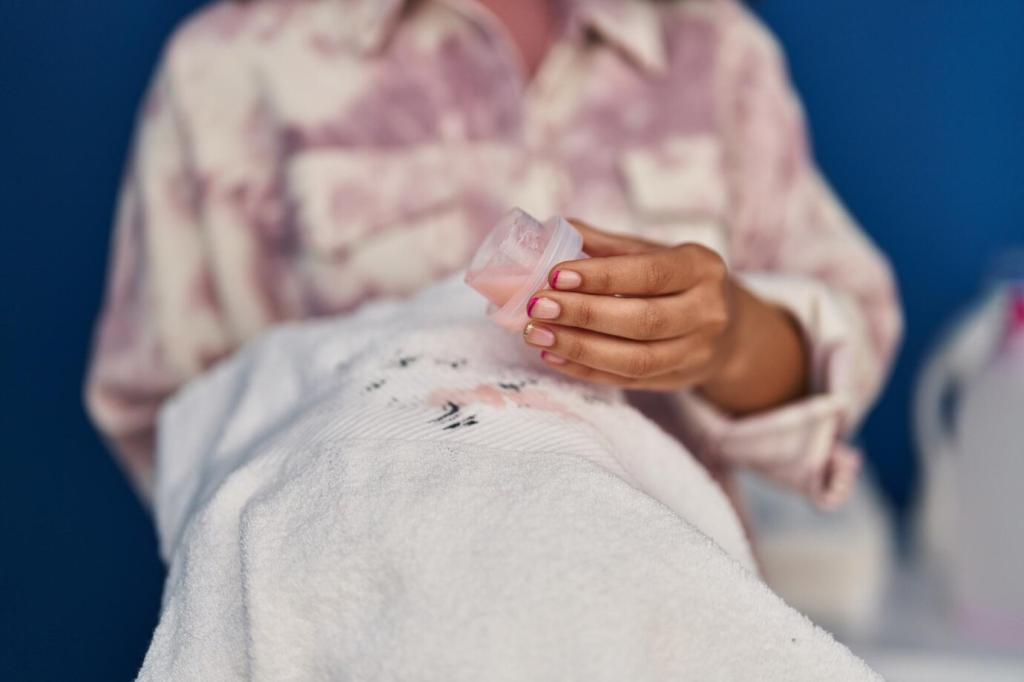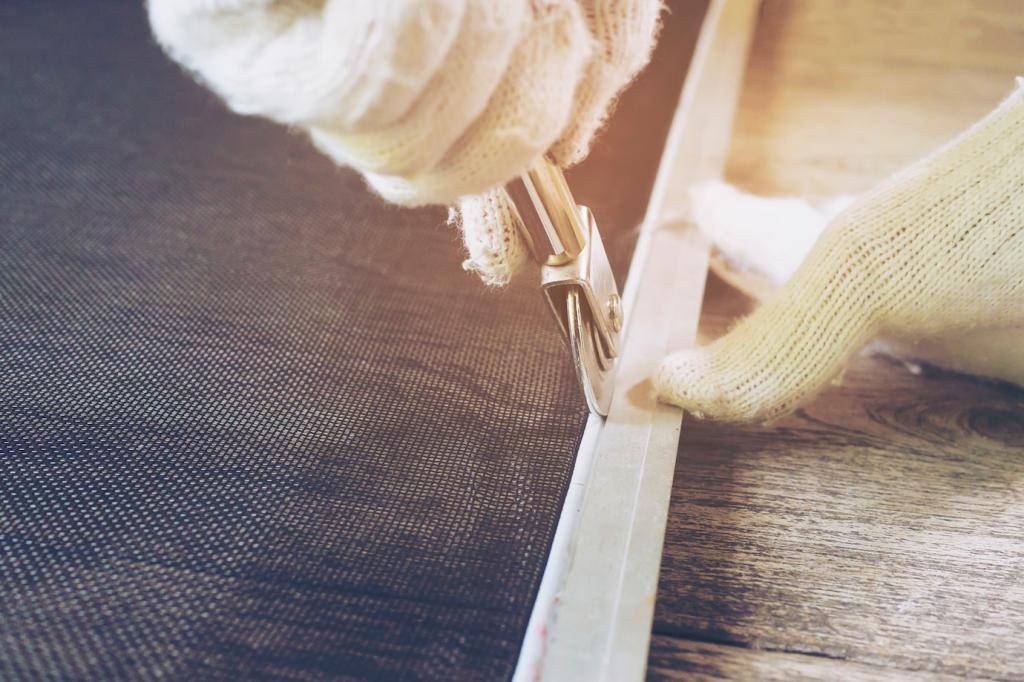Chosen theme: Extending the Life of Silk Bedding. Learn caring rituals, science-backed methods, and real-life habits that keep your silk sheets, pillowcases, and duvets strong, lustrous, and luxuriously soft for years. Subscribe for weekly tips and share your own care wins in the comments to help other silk lovers thrive.
Silk is made of fibroin, a protein similar to hair, which is why harsh alkalinity, strong enzymes, and mechanical abrasion weaken it fast. Think gentle, pH‑neutral cleansers and low friction. If you would not do it to your hair, your silk bedding probably will not enjoy it either.
Know Your Fiber: The Science Behind Long-Lasting Silk
Catch trouble while it is tiny: dulling sheen where your shoulders rest, faint fuzzing along seams, or a single lifted thread near pillow edges. A quick weekly inspection with soft light prevents small issues from turning into tears. Share what early clues you have noticed to guide fellow readers.
Know Your Fiber: The Science Behind Long-Lasting Silk
Smart Washing Habits That Preserve Strength
Avoid detergents with protease enzymes, heavy alkalinity, bleach, or optical brighteners, which attack silk’s protein and finish. Use a pH‑neutral, silk‑safe formula and dose lightly. Excess detergent leaves residue that dulls luster and stiffens fibers, inviting friction. Drop your favorite silk-safe product in the comments.
Smart Washing Habits That Preserve Strength
Cool water around 20–30°C, short cycles, and minimal agitation protect delicate filaments. Place pillowcases and sheets in a mesh bag to reduce snags and stretching. Never wring; press water out in a towel. The less turbulence you create, the longer your silk will float beautifully through years of use.
Smart Washing Habits That Preserve Strength
Hand-washing offers maximum control, yet a modern machine on delicate with a generous water level and mesh bags can be safe. Reader Lina extended pillowcase life by switching to shorter cycles and cooler rinses. What is your method? Vote in a quick poll and subscribe for the results breakdown.
Drying, Steaming, and Sunlight Without Regret
Air-Dry the Silk-Safe Way
After washing, roll each piece in a clean towel to remove excess water, then reshape seams and lay flat on a rack away from direct sun. Avoid clothespin marks by draping over thick bars. Flip midway for even drying. A small fan on low helps, but heat should never be the driver.
Steam and Press with a Light Touch
Use low steam from the wrong side with a pressing cloth, moving constantly. Never park the iron or blast high heat. Gentle steaming relaxes wrinkles without crushing the sheen. Skip spraying perfume or water directly, which can spot fibers. Share your favorite wrinkle-removal routine for tricky duvet corners.
Protect from UV Damage
Ultraviolet light fades dye and weakens fibroin, making silk brittle. Dry in bright shade, or indoors near a breezy window with UV film. Do not store on sunny sills or open shelves under skylights. Have you tried UV-filter curtains? Tell us whether they helped preserve your colors and shine.
Nighttime Habits That Extend Lifespan
Retinoids, benzoyl peroxide, and alpha hydroxy acids can discolor or weaken silk over time. Let skincare absorb fully and blot excess oils before bed. Tie hair after applying serums to keep residue away from fibers. List the products you use, and we will help troubleshoot any fabric interactions together.
Give your bedding days off. Rotate between at least two pillowcase pairs, flip sides midweek, and air pieces in indirect light before returning them to the bed. This reduces wash frequency and stress. Create a simple calendar reminder and tell us if the routine changes your fabric’s feel.
Cat claws and metal bracelets are silk’s sworn enemies. Trim pet nails, use soft pet blankets on top, and remove sharp accessories. Choose smooth sleepwear to minimize friction. My neighbor Mira halved snags in a week after a quick claw-trim ritual. Share your pet-proofing tricks below.

Storage and Seasonal Strategies

Let It Breathe, Not Smother
Store silk in cotton bags with acid‑free tissue to buffer folds. Skip plastic bins and vacuum sealing, which trap moisture and invite creasing. Lavender sachets deter pests without harsh odors. My grandmother’s pillowcases still gleam because she always let them breathe and never buried them in plastic.

Manage Humidity and Freshness
Aim for 45–55% relative humidity to avoid brittleness or mildew. Use small cedar blocks or natural sachets, and refresh them seasonally. Avoid overusing silica packs, which can overdry fibers. A monthly airing day keeps items fresh. What is your climate like, and how do you balance moisture?

Fold Smart, Avoid Crease Damage
Refold along new lines every few weeks to prevent set-in creases. Roll duvets around a clean tube core, and slip tissue between layers to prevent dye transfer. Label storage with dates to remind you when to rotate. Share before-and-after photos if this trick rescued stubborn fold lines.
Treat Stains by Type, Not Panic
Blot protein-based stains with cool water first; never rub. For oily marks, a drop of silk-safe detergent gently massaged can help. Neutralize alkaline residues with a diluted white vinegar rinse. Always spot test in a seam allowance. Tell us your toughest stain story, and we will crowdsource solutions.
Mend Snags and Tiny Tears with Finesse
Pull snags to the reverse with a fine needle or tiny crochet hook, then smooth threads gently. For small splits, a careful ladder stitch with silk thread can be nearly invisible. I saved a honeymoon pillowcase this way—share your repair victories and inspire someone to fix, not toss.
Refresh Luster Without Overwashing
A cool rinse with a touch of silk-friendly conditioner or vinegar can revive hand. Steam to relax wrinkles instead of constant washing. Avoid silicone-heavy sprays that build up and attract soil. If you try this mini-reset, tell us how the fabric feels after a week of regular use.
For bedding, 22–25 momme balances drape and durability, while 19 momme is lovely for pillowcases used with care. Look for long‑filament mulberry silk and tight, even weaving. Charmeuse feels sumptuous; twill adds subtle strength. Ask brands about certification and thread quality, then share your trusted sources.

Join our mailing list
